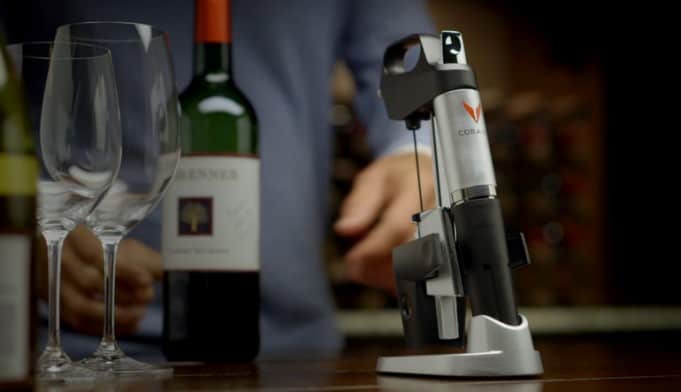Here’s the problem. You’ve amassed a primo wine collection. At night your precious bottles whisper to you, open me, open me!
It’s the seduction every wine collector must endure. But you don’t dare open that rare Bordeaux, cult Screaming Eagle or that special bottled gifted to you when you graduated, got married and/or turned 21, 30, 40, 50, 60, 70… because you must keep saving it. For when, I think we never really know. Woe is us eh.
I fall into that same (brutally disadvantaged middle class) boat.
While my cellar is far from gargantuan (we converted a small closet under the stairs), over the years I’ve managed to tuck a bottle in there here and there. Mostly Napa stuff, as we live right near by here in Silicon Valley.
My wife, though, to be perfectly up front about it is the real collector. Me, I’m the “taster.” Ridiculous I know.
Since my wife doesn’t have a glass of wine that often opening a bottle means ensuring I have friends dropping by, or family in town. Either that or I need to be ready to down the whole bottle – no Caymus, Silver Oak, Harlan, Etude or just about any other fine Napa bottle is going to go back into the fridge unfinished, dare it face a whole twenty four hours of oxidization.
Side note: pulling a special bottle from the cellar really has nothing to do with any of this. The fact of the matter is that I need to arm wrestle my wife, or–preferably–wait until she’s traveling around the world when I can then sneak into the cellar and have a 2001 Silver Oak Alexander Cab, uh, mysteriously disappear (with nary a trace in CellarTracker either ensuring the vino forensics sure to follow come up dry).
Sadly, this life of adventure could be past glory if what I’ve just read on Gizmag is true.
Apparently, a company called Coravin has figured out a way to let you “open” your favorite collectible and enjoy a glass without (a) really opening it; (b) letting oxygen get to it; or (c) compromising its continued ageability in anyway whatsoever.
It all sounds a bit too David Copperfield for my liking. If it works, though, who am I to argue?
The key to how the “Coravin 1000” ($299) works is perhaps equal parts science and marketing.
The science aspect involves a needle and argon gas. According to the company, a small needle is injected through the cork. Argon gas then adds pressure which forces wine through the needle and into an ever hopeful wine glass. Being an inert gas (one that’s been used by winemakers for years), there’s no damage to the wine remaining in the bottle. After the needle is removed, the cork heals itself, thus allowing you to enjoy a glass of that special wine, while allowing it to continue to age.
MORE STARK SIPS: Those hipster white grapes
Restaurants use similar systems. A few years back I recall Josiah Sloan giving us a demo of his system for Stark Insider TV at his (awesome) restaurant Sent Sovi in Saratoga – these systems help a small volume dining establishment offer up fine wines by the glass. Without the ability to “re-bottle” an unfinished bottle it would otherwise be economically unfeasible to offer them.
It all sounds rather convincing – almost as convincing as Jeremy Clarkson showing you how easy it is to build a home-made hovercraft and cruise it down the Avon.
But, as my great mentor Dicky Fox once said, there’s no such thing as a free lunch, only free tacos. Or something like that.
I’m quite anxious to give the Coravin a go. The price gives us mere mortals and non-restaurateurs a chance to use the same technology in our homes. I admit I’m skeptical. Anything that reduces the path of resistance between me and a glass of Harlan or Etude, however, can’t be a bad thing and must be explored to the full extent – requiring much testing in the process. If I do get a chance soon to put the Coravin to the test I’ll report back here, for better or worse.


